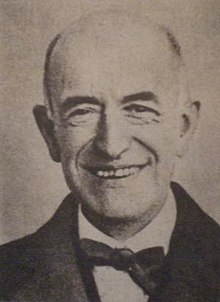| Los amores de la Inés | |
|---|---|
| Zarzuela by Manuel de Falla | |
The composer in 1919 | |
| Translation | The Loves of Inés |
| Librettist | Emilio Dugi |
| Language | Spanish |
| Premiere | 12 April 1902 Teatro Cómico, Madrid |
Los amores de la Inés (The Loves of Inés) is a zarzuela in one act, two scenes, composed by Manuel de Falla in collaboration with Amadeu Vives. [1] The work uses a Spanish language libretto by Emilio Dugi (Mannel Osorio y Bertrand) and the music is organized into a prelude and five musical sections.

Zarzuela is a Spanish lyric-dramatic genre that alternates between spoken and sung scenes, the latter incorporating operatic and popular songs, as well as dance. The etymology of the name is uncertain, but some propose it may derive from the name of a Royal hunting lodge, the Palacio de la Zarzuela near Madrid, where, allegedly, this type of entertainment was first presented to the court. The palace was named after the place called "La Zarzuela" because of the profusion of brambles (zarzas) that grew there, and so the festivities held within the walls became known as "Zarzuelas".

Manuel de Falla y Matheu was a Spanish composer. Along with Isaac Albéniz, Francisco Tárrega, and Enrique Granados, he was one of Spain's most important musicians of the first half of the 20th century. His image appeared on Spain's 1970 100-pesetas banknote.

Amadeu Vives i Roig was a Spanish musical composer, creator of over a hundred stage works. He is best known for Doña Francisquita, which Christopher Webber has praised for its "easy lyricism, fluent orchestration and colourful evocation of 19th Century Madrid—not to mention its memorable vocal and choral writing" characterizes as "without doubt the best known and loved of all his works, one of the few zarzuelas which has 'travelled' abroad".
The zarzuela was premiered at the Teatro Cómico in Madrid on 12 April 1902. [1] It was the only example of de Falla's five zarzuelas to be actually produced. [2] It has been performed again in 2013, at the Teatro de la Zarzuela, Madrid.

Madrid is the capital of Spain and the largest municipality in both the Community of Madrid and Spain as a whole. The city has almost 3.3 million inhabitants and a metropolitan area population of approximately 6.5 million. It is the third-largest city in the European Union (EU), smaller than only London and Berlin, and its monocentric metropolitan area is the third-largest in the EU, smaller only than those of London and Paris. The municipality covers 604.3 km2 (233.3 sq mi).

The Teatro de la Zarzuela is a theatre in Madrid, Spain. The theatre is today mainly devoted to zarzuela, as well as operetta and recitals.








